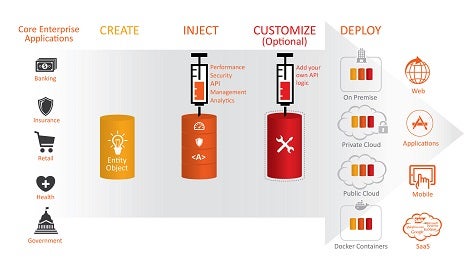The reality of enterprise IT is that most systems never really go away. Many IT organizations end up running applications on systems such as the IBM iSeries (formally known as the AS/400) for a decade or more. The challenge they face is that managing them within the context of a more modern IT environment becomes more costly every year.
To reduce that complexity, OpenLegacy developed a platform for wrapping legacy systems in a Java object that can then be invoked using REST application programming interfaces (APIs). Today, OpenLegacy extended those capabilities with a version 3.0 update to its namesake platform that makes it easier to manage the full API lifecycle surrounding a legacy system, including API management functionality to address versioning, caching, security and analytics.
Hans Otharsson, chief operating officer for OpenLegacy, says the basic idea is to enable IT organizations to manage legacy systems at a higher level of abstraction, in much the same way they do modern IT systems. As a result, IT organizations can then decide at their own pace when to retire these systems without having their ongoing operational costs continue to climb as “legacy system rigor mortis” sets in.
The OpenLegacy platform, adds Otharsson, is designed to support the Swagger specification for designing and creating those APIs and can also be invoked using JavaScript frameworks such as AngularJS.
In addition to REST APIs, Otharsson notes that legacy systems can be wrapped in more traditional Web services technologies, such as SOAP.
Regardless of the approach taken, the vast majority of IT organizations are under a massive amount of pressure to reduce their operational costs. The problem is that because of the nature of the application being used or the costs associated with replacing a legacy system, it’s not practical for them to deploy more modern IT infrastructure. However, that doesn’t necessarily mean they can’t enjoy the benefits of a modern approach to managing those systems, by using APIs to better eliminate the inherent complexity in almost any legacy system that is five or more years old.




